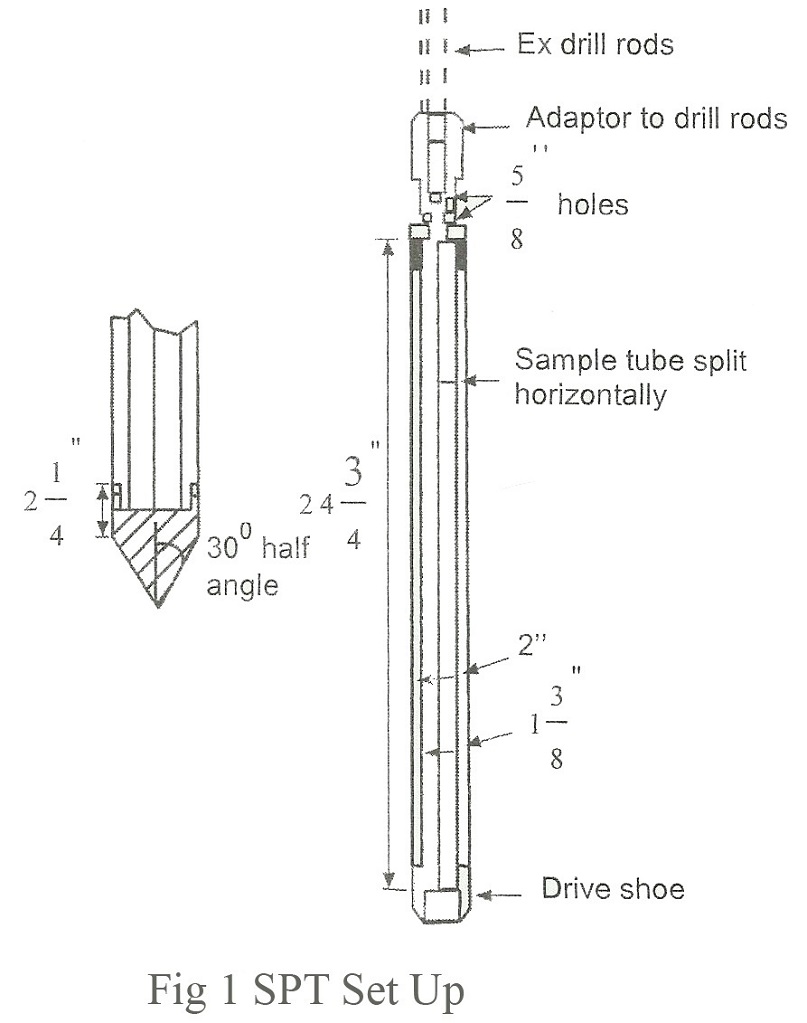During the course of site investigation, different penetration tests are carried out and these tests are enlisted below: Standard Penetration Test (SPT), Dynamic Cone Penetration Test (DCPT) and Static Cone penetration Test (CPT). Among these, Standard penetration test SPT is the most popular one and is widely used.
Standard penetration test:
The test is conducted by driving a split spoon (Fig 1 c) into the soil for a distance of 450 mm. The force required to drive the spoon up to that depth is provided by a standard hammer of 65 kg weight falling through a height of 760 mm. The various features of the split spoon are shown in Fig.1.
In the initial phase of this process, the spoon attached to a drill rod is lowered into the bottom of the hole. After that as mentioned above, the standard hammer usually known as ‘monkey hammer’ is allowed to fall on the top of the drill rod until the sampler gets penetrated into the soil through a distance of 150 mm. This depth of penetration is the seating drive and is not accounted for .
After the seating drive, the actual penetration test is started and blows required for next two successive penetrations of 150 mm are recorded and added to drive the rod lower into the ground. This Value is called as N-Value or SPT Value. The test is conducted for each 1.5 m interval of depths or for special situation for each 75 cm depth. If N-Value record is 50 before the full penetration of 30 cm, it is taken as refusal and the test is terminated.
The standard penetration test is an empirical test but there are extensive correlation between N-Value with relative density, angle of internal friction, density, elastic modulus and unconfined compressive strength.
Factors affecting standard penetration test (SPT) test results: – The various factors, which make SPT results non-reproducible, are as given below.
- Height of fall of monkey hammer
- Interference of drop hammer by guide rods
- Diameter and condition of winch
- Number of turns of rope in winch
- Condition of rope used
- Use of damaged shoe
- Improper seating of sampler in the bottom of the hole
- Effect of isolated stone met in the hole
- Effect of Water table in silts and sands
- Carelessness on the part of the tester
- Effect of overburden pressure
